I am currently trying to choose a charger IC for Lithium-ion cells batteries and thereby came across the datasheet for the MAX1737:
https://datasheets.maximintegrated.com/en/ds/MAX1737.pdf
The datasheet does not seem to mention the maximum charging current this IC is able to supply.
Hence my question: Did I miss something, or could it be that the most important characteristic of any charger IC indeed is not mentioned in that datasheet?
EDIT 1
I have understood that the charging current is driven by an external MOSFET. But when you go to
https://www.maximintegrated.com/en/products/power/battery-management/MAX1737.html/tb_tab1#tab1
and then switch to "key specs", you can see that the maximum charging current is 4 A.
So I am rewording my question:
Why is the charging current limited at all (given that charging is driven by an external MOSFET), and why is that limitation not mentioned in the datasheet?
